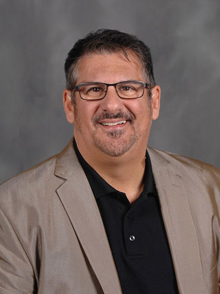 The global economic downturn of the past decade has taken an especially hard toll on arts programs—not only in the United States, but across the developed world.
The global economic downturn of the past decade has taken an especially hard toll on arts programs—not only in the United States, but across the developed world.
Faced with severe cutbacks in government funding and widespread layoffs—compounded by an increased pressure to improve standardized test scores—many schools and universities are stripping down to a bare-bones, no-frills budget. When this happens, music education, along with other subjects deemed “extracurricular,” is often among the first to go.
This decline doesn’t impact just music educators and young, aspiring musicians. A growing body of research suggests that music education enhances literacy skills that facilitate all other learning.
Christopher Venesile, assistant professor of choral music education and jazz educator at Kent State University, has spent the last 30 years transforming young lives through music. A former public school teacher and teacher educator, he’s witnessed how music education improves student performance and closes achievement gaps.
“I found that the most dramatic impact was on those students who were marginalized to begin with, but who had a deep and abiding love for music and participating in music,” he said. “I’ve seen how their interaction with music helped them to become better students.”
Language processing
Plato was right when he said that music gives “wings to the mind.”
A 2014 study published in The Journal of Neuroscience found that children who took music lessons for two years didn’t just become better at playing an instrument—they became better at processing language.
The study took place in the offices of the Harmony Project in Los Angeles, CA—an after-school program that teaches music to children in low-income communities. According to the organization’s website, 97% of Los Angeles County high school seniors with at least three years’ participation in Harmony Project have graduated from high school and have gone on to college, despite high school dropout rates of 50% in the neighborhoods where they live.
Language and music share the elements of pitch, timing, and timbre. As children become more familiar with these elements through musical instruction, their language-processing skills also improve—enabling them to distinguish nuances in speech more easily, according to Venesile.
“Science shows that when children play music, their brains begin to process these sounds that they otherwise wouldn’t hear,” said Venesile. “Neurophysiological distinction has been shown to aid in literacy.”
Vocabulary growth
Anyone who’s ever heard the song “Fifty Nifty United States” knows that words paired with music are far easier to remember.
According to child psychologist Don McMannis, music activates three different centers of the brain simultaneously: language, hearing, and rhythmic motor control. “By inducing emotions, it also creates a heightened condition of awareness and mental acuity,” he says. As students repeat and memorize a song, the lyrics become etched into their brain.
A 2009 study in Psychology of Music journal directly compared second graders from two New York City public schools, located in nearby neighborhoods with similar demographics. Only one of the schools included music instruction as a part of the regular curriculum, beginning in kindergarten.
The students were tested for two specific literacy skills at the start and end of the school year: general vocabulary and “verbal sequencing,” or their ability to interpret short sentences and understand their meaning.
When the children were retested at the end of the school year, students who did not receive a music education performed only slightly better on the literacy test, whereas those in the music-rich school scored “significantly higher.” The difference was especially pronounced on the vocabulary test—students who studied music made significant gains on this test, “while scores in the control group remained mostly static,” according to the report.
Development of 21st-century skills
Venesile points to the a cappella movement—which challenges students to find synergy, to improvise, and to self-adjust—as an effective exercise in collaboration, creativity, and critical thinking—core 21st-century skills.
“Most of this music is not written down,” he said. “They listen to a variety of contemporary sounds and decide in a collaborative process how they’re going to flesh out the parts.”
Venesile also encourages the development of these critical skills by infusing his lessons with relevant technologies, such as MuseScore—a free, notation-based program that allows users to write music—and Garage Band—a digital audio workstation that allows users to create music or podcasts.
Although many music educators debate the utility of these apps, Venesile believes they are effective tools for learning advanced musical concepts in an engaging and enjoyable way.
“It’s one of the most exciting times in all of human history for music education,” he said.
Critical literacy
Beyond its many cognitive benefits, Venesile said the music classroom is an ideal space to enhance students’ sense of cultural identity and awareness. When students learn about music, they learn about language, culture, and history.
Venesile believes the increasing diversity of today’s student bodies presents a need to teach a wider variety of musical genres. Looking ahead, he hopes music education programs will embrace more contemporary and vernacular styles that reflect all backgrounds.
“It’s time to invite more than just the model of the marching band, orchestra, and choir to the table.”
To learn more about Kent State University’s School of Music, visit kent.edu/music.
Alina
O’Donnell is the communications strategist at ILA and the editor of Literacy Daily.